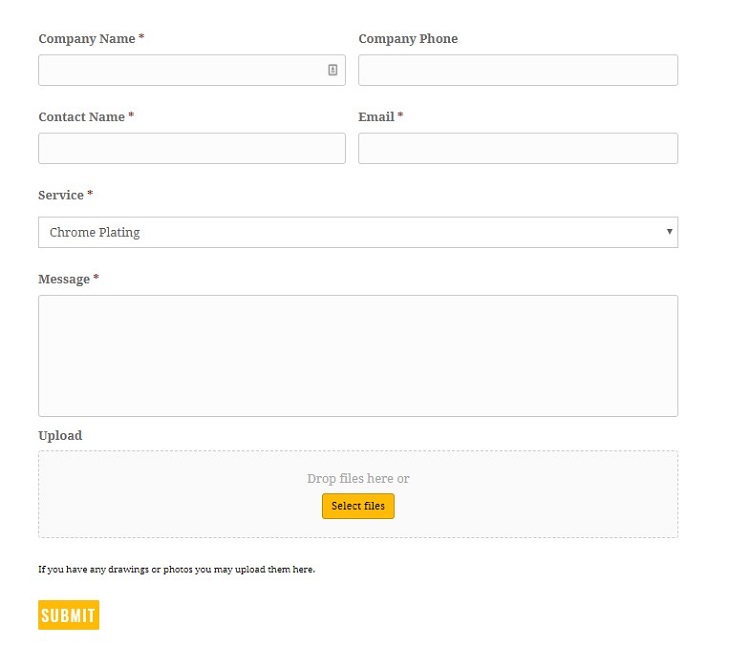Website traffic is a good indication of whether or not people are interested in your brand, products or services. But
if you’re not seeing a good conversion rate then that traffic might as well be useless.
A conversion rate indicates the number of visitors that are converting or moving forward with an offer or transaction. For example, if your goal is to get more people signed up for an email newsletter, then the ratio of visitors to sign-ups would be your conversion rate. Conversion rates can be used to measure any desired action from sales to survey participation.
When it comes to a masterfully crafted website, the entire design is structured to service a particular action, hopefully, boosting the related conversion rates as a result. For our email newsletter goal, for example, the landing page of our business website would be focused on achieving more sign-ups.
You can see that both of these elements — conversion rates and website design — are clearly connected. It’s necessary to synchronize both to improve your website’s effectiveness and realize its full potential.
Knowing that, here are nine sure-fire ways to boost your site’s conversion rates:
1. Get to the Point, and Fast
15 seconds. That’s how much time you have to capture the attention of your visitors before you’ve lost it forever. The longer you take to get your point across the higher your bounce rates and the lower your conversion rates are going to be.
Say what you’re going to say and ask what you’re going to ask as soon as possible. Obviously, you’ll want to use a standard call-to-action, just make it good.
Shopify’s free trial landing page is the best example of this, bar none. The design is simple yet effective, with just a single field for the visitor’s email address. The headline also includes the call-to-action built-in, with a value proposition right below.
2. Minimize Data Entry
Most likely, the desired action will require some form of data entry from your visitors whether that’s sharing their email address, payment details or contact info. Keep the field requirements as minimal as possible. If you only want an email address you don’t need to be asking for their life story.
There are additional hacks to boost form field conversion rates you can use, as well.
3. Add a Guarantee or Reassurance
If you’re selling a product or service then you need a no-questions-asked refund policy in place. If you’re collecting information, then you’ll need to reassure your visitors that you won’t be doing anything shady with it. In most cases, people just want to know they have the support they need, so give it to them.
Don’t forget your privacy statement for opt-in forms either.
4. Use Visuals In Place of Words
Videos and photos are preferred over long blocks of text, especially by mobile users. If you can say what you need to in a visual representation then do that instead.
Mobile video usage has increased by nearly 10 million daily viewing minutes over the last two years. It’s how most people prefer to receive their information and media experiences, so honor that.
5. Demonstrate or Clearly State the Value Proposition
Bulleted product and service features are great. Revealing testimonials and how your offerings helped other customers is also a great idea — it’s also included later on in this list. But none of that makes any difference if the product in question doesn’t provide value to your customers.
What exactly makes it so special? What is it going to do for them? Why is it better than comparable products or services? Don’t waste time answering these questions either. Find a way to either demonstrate or explain the true value of your offerings, as soon as possible.
Establishing a clear value proposition can boost website conversion rates by as much as 90 percent.
Airbnb’s landing page for prospective hosts is a prime example of this. It tells interested hosts exactly how much they can earn, locally, by signing on to the service.
6. Share Some Testimonials
Speaking of customer testimonials, use them when you can. They help reduce risk and provide verifiable proof that your services or products work as intended. It’s also important that you place them properly, sharing them on your landing page(s) or near your call-to-action.
One study found that customers spend 31 percent more with businesses that have good client testimonials available. Furthermore, 91 percent of people regularly or occasionally read online reviews, and 84 percent trust online reviews as much as a personal recommendation.
7. Contact Forms Are a Must
Always, always, always give your visitors a way to reach your company and team. Contact forms are an absolute must, and like opt-in forms, they should minimize the amount of information collected.
Taking a quick look at Hard Chrome Specialists’ contact form, we can see they have the bare minimum of necessary fields. They ask for the customer’s name, phone number and contact information, as well as a small message. That’s it, and that’s exactly how it should be.
8. Offer Reliable Support
Many website administrators opt to include live chat tools so their customers can receive real-time support. If that’s in the cards then definitely make use of a live chat tool, because it can help alleviate visitor concerns, and keeps support channels open at all times.
But if it’s not something that’s possible, that’s okay, just make sure you have a support system in place and that it’s reliable. If it takes days or even weeks for your support reps to get back to customers about queries or problems, you’re going to lose a lot of business.
9. Don’t Forget to Test
A/B testing and user feedback are incredibly important for optimizing a website’s design and conversion rates. Even just moving a “buy now” or “subscribe” button to another area of the site can have a huge impact on engagement. That’s why it’s necessary to conduct a series of tests to not only find the best placement for such elements but also to understand why visitors might prefer a particular setup over another.
It’s also important to continue reviewing feedback well after a site goes live, and especially after you make any changes or edits to the site design. You’ll gain valuable insights as to how and why your site is seeing various behaviors.
In some cases, testing can help improve conversion rates by as much as 15 percent or more. So don’t sleep on it.
Implement These Proven Tips
A well-optimized website or landing page is going to increase total conversions significantly because they are designed to engage and encourage visitors. So, if you’re looking to boost your conversion ratings, then implementing these tips is going to help for sure.
Visitors want to be shown value as soon as possible, and you must be able to convey that and more in a matter of seconds — 15 seconds to be exact. Crafting an effective, minimal design is key to achieving success. Remember that, and everything will work out for the best.



